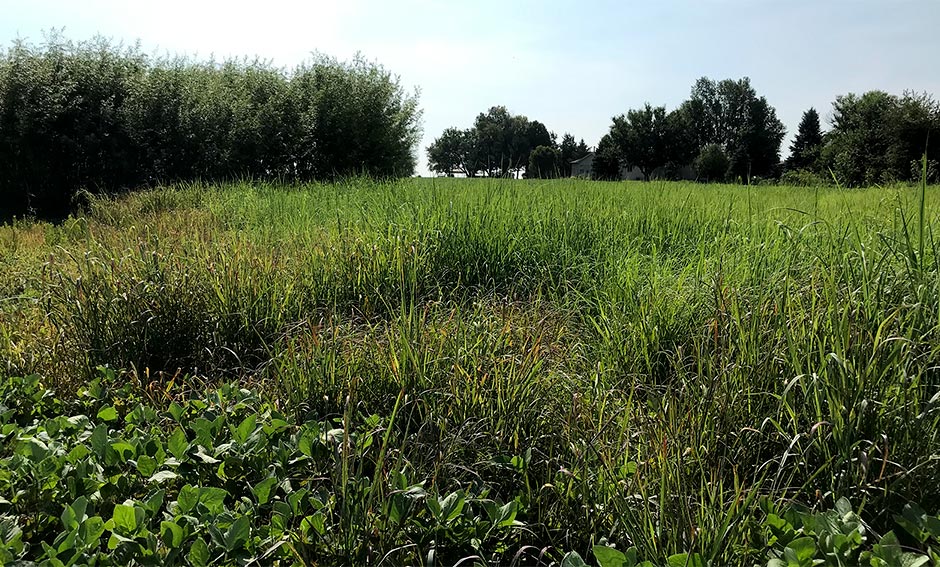Loading...
Marginal Land and Landscape Design
Improving resiliency and sustainability of agricultural systems by redesigning agricultural landscapes with perennial bioenergy crops
Multifunctional perennial production systems for bioenergy: performance and progress
- Englund, O., I. Dimitriou, V.H. Dale, K.L. Kline, B. Mola-Yudego, F. Murphy, B. English, J. McGrath, G. Busch, M.C. Negri, M. Brown, K. Goss, S. Jackson, E.S. Parish, J. Cacho, C. Zumpf, J. Quinn, and S.K. Mishra, 2020, Multifunctional perennial production systems for bioenergy: performance and progress: WIREs Energy and Environment, https://doi.org/10.1002/wene.375
- Advanced review paper.
- Team contributed a section, “Potential locations where perennial bioenergy crops could be beneficial in the U.S.”, describing opportunities for producing feedstocks from both integrated perennial crops in the Midwest and managed forest land in the Southeast.
- Highlighted ecosystem services and associated values.
Designing Bioenergy Landscapes to Protect Water Quality
- Kreig, J.A.F., H. Ssegane, I. Chaubey, M.C. Negri, and H.I. Jager, 2019, Designing Bioenergy Landscapes to Protect Water Quality: Biomass and Bioenergy: Biomass and Bioenergy. https://doi.org/10.1016/j.biombioe.2019.105327
- Focused on factors for spatial decisions on implementing designs for water quality improvement.
- Developed decision trees for placement of vegetated strips, artificial drainage, wetlands, and residue removal.
- Conservation practices can be combined in bioenergy landscapes to improve water quality and provide other ecosystem services.
Introducing perennial biomass crops into agricultural landscapes to address water quality issues and provide other environmental services
- Cacho, J.F., M.C. Negri, C. Zumpf, and P. Campbell, 2017, Introducing perennial biomass crops into agricultural landscapes to address water quality issues and provide other environmental services. WIREs Energy Environ., E275. https://doi.org/10.1002/wene.275
- A primer on multi-functional agricultural landscapes intended for the general audience, especially upcoming college students in agricultural/environmental science.
- Summarized the underlying mechanisms of a multi-functional agricultural landscape.
- Synthesized the results of current work and conceptual approaches in which an agricultural multi-functional landscape could be implemented in both temperate and tropical regions.
- Summarized possible pathways to address some of the challenges in adopting the integrated commodity-bioenergy crop production system.
Synthesis, interpretation, and strategies to enhance environmental outcomes
- Efroymson, R., M. Langholtz, K. Johnson, C. Negri, A. Turhollow, K. Kline, I. Bonner, and V. Dale, 2017, Synthesis, interpretation, and strategies to enhance environmental outcomes. In: 2016 Billion Ton Report, Volume 2, Chapter 14. January 2017, U.S. Department of Energy.
- Chapter of Billion Ton study provides a framework of the implications of biomass production relative to land use change and a wide range of environmental effects.
- Landscape design, logistical efficiencies, and economic aspects are also described.
- The Fairbury, IL site serves as a case study.
An Integrated Landscape Designed for Commodity and Bioenergy Crops in a Tile-Drained Agricultural Watershed
- Ssegane, H. and M.C. Negri, 2016, An Integrated Landscape Designed for Commodity and Bioenergy Crops in a Tile-Drained Agricultural Watershed. Journal of Environmental Quality, 45:1588-1596, https://doi.org/10.2134/jeq2015.10.0518
- Developed framework for identifying marginal lands in tile-drained agricultural landscapes, taking into account environmental and economic factors.
- Used the Indian Creek, IL watershed to illustrate the framework.
- Modeled the marginal land as converted from grain crops to bioenergy crops (willow, switchgrass, big bluestem).
- Results indicated significant reductions in nitrate and sediment losses.
Mapping Intra-Field Yield Variation Using High-Resolution Satellite Imagery to Integrate Bioenergy and Environmental Stewardship in an Agricultural Watershed
- Hamada, Y., H. Ssegane, and M.C. Negri, 2015, Mapping Intra-Field Yield Variation Using High-Resolution Satellite Imagery to Integrate Bioenergy and Environmental Stewardship in an Agricultural Watershed. Remote Sensing, 7:9753-9768; https://doi.org/10.3390/rs70809753.
- Determined under-productive areas using the Normalized Difference Red-Edge Index (NDREI) derived from high-resolution imagery.
- Examined impacts of growing bioenergy crops in the under-productive areas using the Soil and Water Assessment Tool model.
- Results indicated the integration of remote sensing and hydrologic modeling is an effective approach to quantify the multifunctional value of projected future landscape patterns in a context of sustainable bioenergy crop production.
Field scale design of multifunctional landscapes for food, bioenergy and ecosystem services
- Ssegane, H., M.C. Negri, J. Quinn, M. Urgun Demirtas, 2015, Field scale design of multifunctional landscapes for food, bioenergy and ecosystem services. Biomass and Bioenergy 80, 179-190. https://www.sciencedirect.com/science/article/pii/S0961953415001415
- Determined under-productive areas using the Normalized Difference Red-Edge Index (NDREI) derived from high-resolution imagery.
- Examined impacts of growing bioenergy crops in the under-productive areas using the Soil and Water Assessment Tool model.
- Results indicated the integration of remote sensing and hydrologic modeling is an effective approach to quantify the multifunctional value of projected future landscape patterns in a context of sustainable bioenergy crop production.








